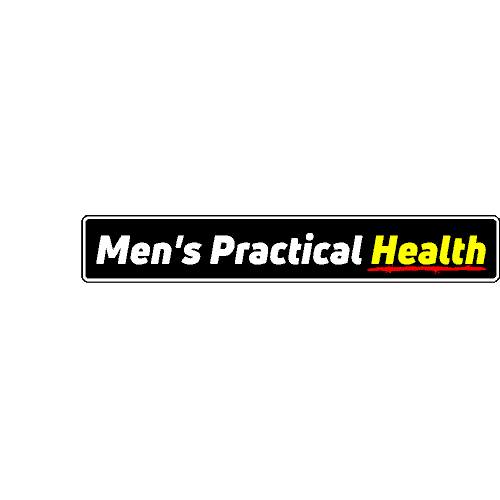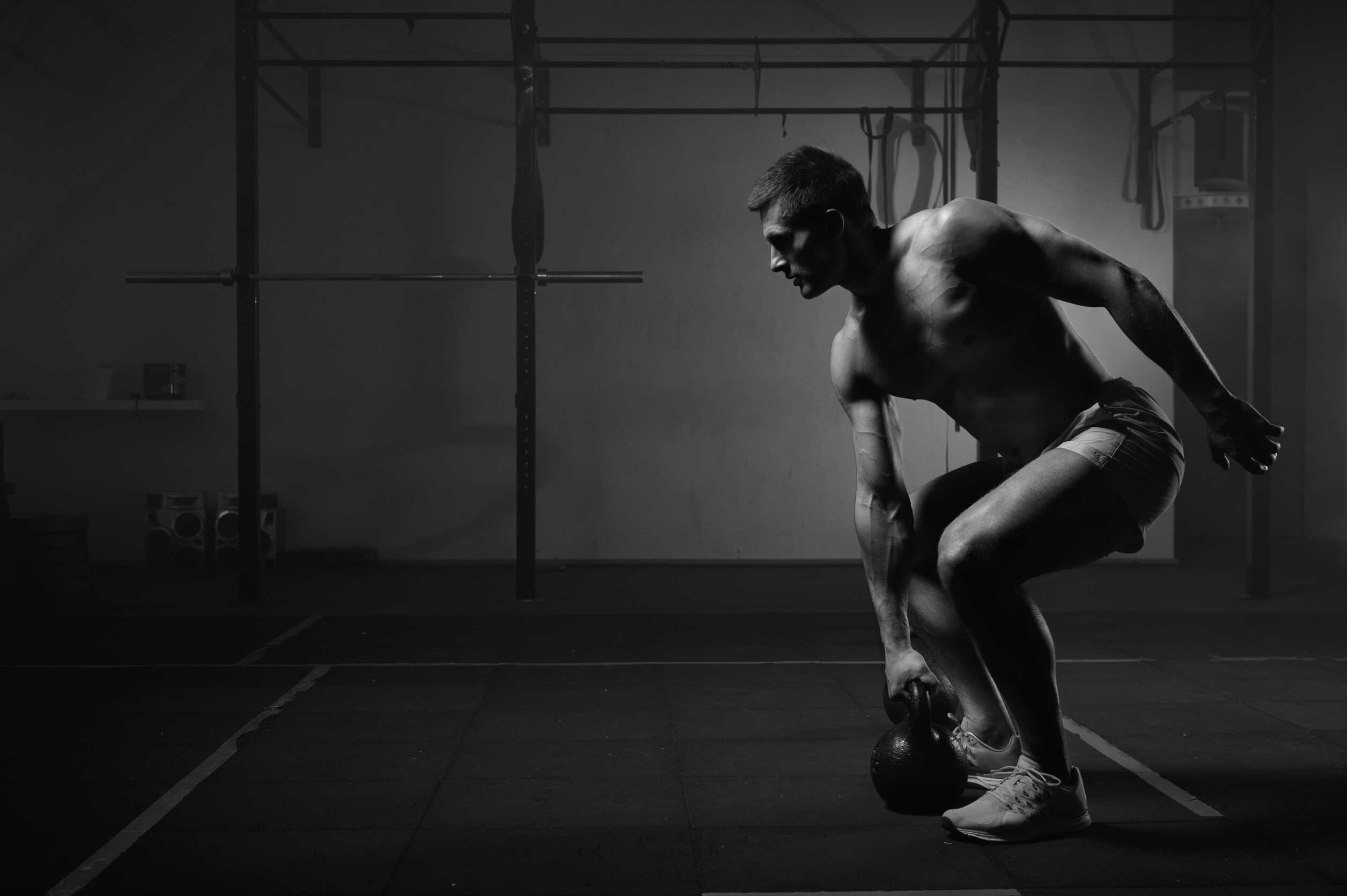Are you confused by all the different exercise options out there? Determining which exercises are best for your goals can be overwhelming.
That’s why, in this blog post, I break down the world of compound exercises. From the benefits to the specific upper and lower body exercises – I’ve got you covered!
I even provide tips for beginners to ensure you’re using the correct technique …
And, I’ve got helpful advice to help you progress with compound exercises.
So, let’s dive into the question, “What are compound exercises?”
Compound exercises are multi-joint movements that work several muscles. A great example of a compound exercise is the squat exercise. The squat exercise targets several leg muscles, including the quadriceps, hamstrings, and gluteus.
I had amazing results using compound exercises in my workouts. Which is why I recommend adding them to your routine – and here’s why …
The benefits of compound exercises
Compound exercises help shape your body and provide many health benefits. They also improve well-being.
Time Efficient
Compound exercises work many muscle groups at the same time. This makes your workout more time efficient, as you can train most of your major muscles in less time.
This is great for those with busy schedules.
Calorie Burn
By involving many muscle groups, these exercises burn more calories during your workout.
Compound exercises are good for losing body fat, building strength and muscle.
As a result, compound exercises are a powerhouse when it comes to building strength. You can lift more weight, increasing stress on the body.
Functional Fitness

These exercises mimic your real-life movements. And so by improving your ability to do daily tasks, you can lower the chance of getting hurt.
Flexibility
Compound exercises can help increase joint mobility and improve posture.
Improved Balance and Coordination
Compound exercises force several muscles to work together. This collaboration helps make your body better at complex activities.
Increased Bone Density
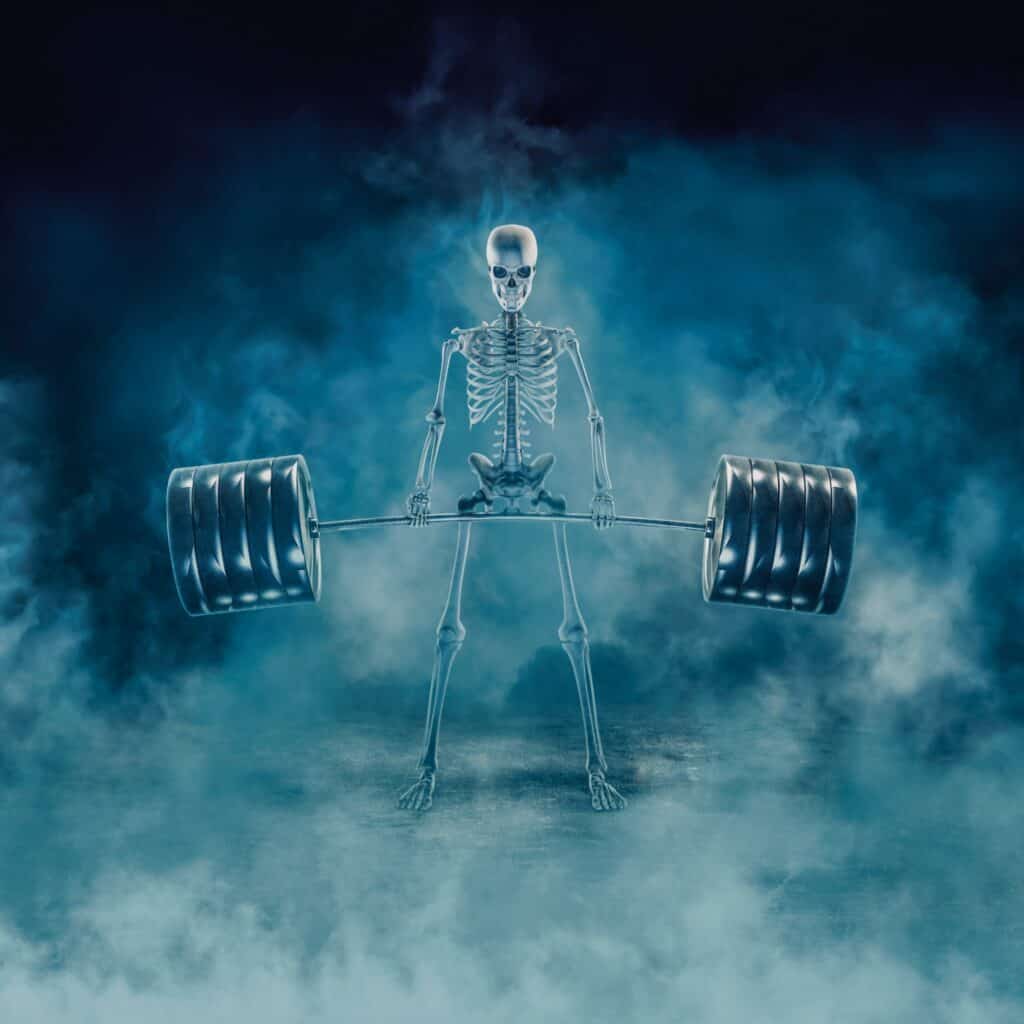
Weight-bearing exercises, will increase your bone density, reducing the risk of osteoporosis.
Now, I’m not saying a 65-year-old beginner should start doing heavy barbell back squats …
But performing such exercises as lunges, can help slow down bone degeneration.
Push compound exercises for upper body
Pushing compound exercises target your chest muscles, shoulders, and triceps. Here are a few examples which you can incorporate into your workout routine:
Bench Press
The barbell bench press exercise is a classic. It works the chest and also involves the shoulders and triceps as secondary muscles.
- Lying on a flat bench, hold a barbell with your hands shoulder-width apart.
- Slowly lower the barbell to your chest and push it straight up.
You can change the bench press by using the decline or incline bench press. You can also do it with dumbbells instead of a barbell.
Note: The more narrow the grip is, the more you will work the triceps.
Shoulder Press
The shoulder press targets the deltoids. These muscles add definition and strength to your shoulders.
It also improves your ability to lift things overhead. a functional benefit that translates into everyday tasks.
- Barbell Shoulder Press
- Dumbbell Shoulder Press
- Seated Shoulder Press:
- Arnold Press
Dips
Dips aim to work the triceps but can also be adjusted to target the pectoral muscles.
To perform the dip exercise:
- suspend yourself on parallel bars with straight arms.
- Then, lower your body until your elbows are at a 90-degree angle
- Push back up to the starting position.
To focus more on the chest, lean the top half of your body forward, with the legs further back.
Push-Ups
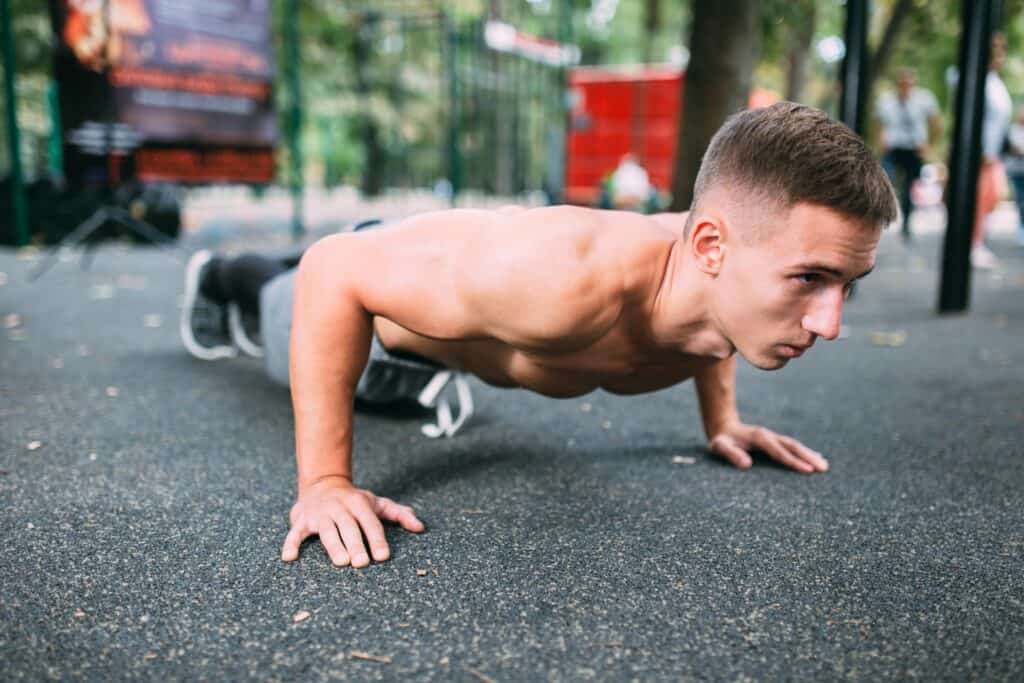
Push-ups offer vast benefits for enhancing a man’s physical physique. It focuses on the chest muscles, called pectoralis major, and the triceps brachii in the upper arm.
The push-up is a good exercise for getting stronger and defining muscles. Especially for beginner trainers.
You can change push-ups to target specific muscles, such as the triceps, to make them work harder.
- Begin in a high plank position
- Hands in line with your chest
- Lower your body until your chest almost touches the floor.
- Push back up to the start position.
Pull compound exercises for upper back
Pulling compound exercises target your back, biceps, and forearms. Here are a few examples to include in your workout routine:
Pull-Ups
- With an overhead bar, grip it slightly wider than shoulder-width apart.
- Pull your body up until your chin is over the bar
- Lower yourself back down slowly.
Chin-Ups
Chin-ups are a great exercise that work your biceps and back muscles. They also target your forearm muscles.
To perform a chin-up:
- Grip the overhead bar with your hands supinated, palms facing towards you, arms fully extended.
- Pull your body up until your chin reaches just above the bar
- Slowly lower your body back down
Remember, control is vital – avoid swinging or using momentum to complete the movement. This will help ensure that your muscles, not inertia, are doing the work.
Barbell Rows
The barbell row is excellent for developing a broad back. This exercise focuses on the lats, rhomboids, traps, and other muscles like the biceps.
In addition, secondary muscles such as the biceps and the brachialis are also employed in this exercise, giving your arms a good workout.
- Stand with your feet shoulder-width apart and hold the bar with your hands just wider than your knees (whatever feels most comfortable)
- Hold the bar with an overhand grip or underhand grip
- Stand with your knees slightly bent, slightly hinge at your hips and row the bar to your lower torso, then lower it back down.
Lat Pulldown
Various grips, such as wide or narrow grip and hands in a supinated position, can be used for the lat pulldown.
To perform a lat pulldown, follow these steps:
- Position yourself on the lat pulldown machine with your knees comfortably resting under the pads.
- Grasp the bar with an overhand grip, hands slightly wider than shoulder-width apart.
- Lean back slightly, keeping your back straight, retract your shoulder blades and pull the bar down to your upper chest.
- Slowly return the bar to the starting position.
- This completes one repetition.
Seated Cable Rows
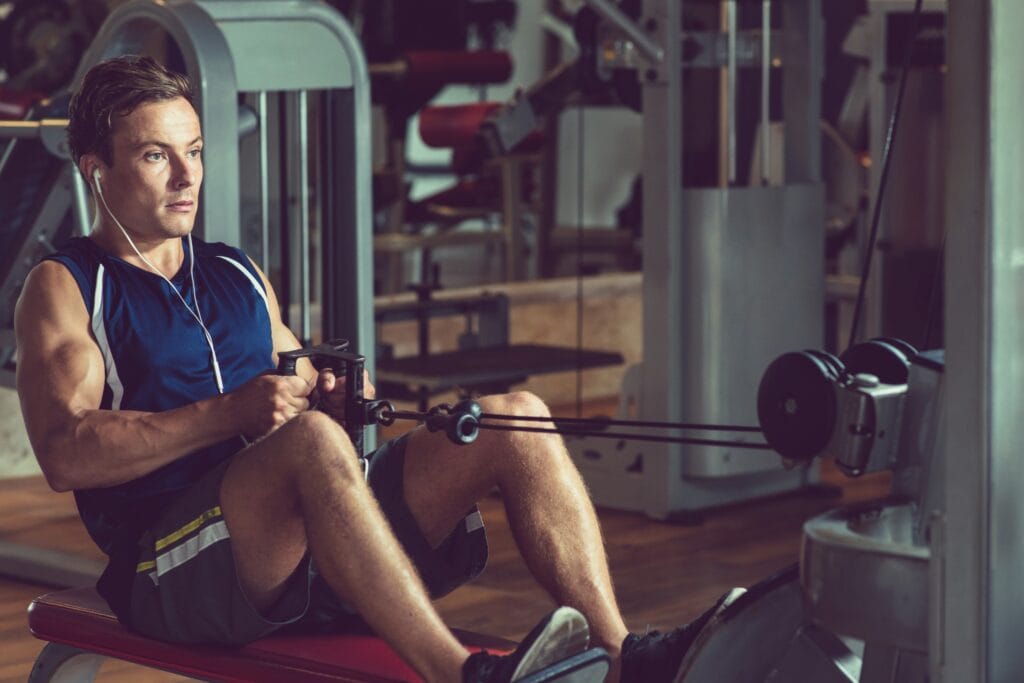
Seated Cable Rows primarily target your back muscles, including your latissimus dorsi and rhomboids.
Other muscles engaged during this exercise include the biceps, forearms and shoulders, making the seated cable row a comprehensive upper-body workout.
This exercise can be performed using different grips.
To perform a Seated Cable Row, follow these steps:
- Sit on the machine with your feet on the foot platforms and your knees slightly bent.
- Grab the handle using your chosen grip, keeping your back straight and shoulders relaxed.
- Pull the handle towards your abdomen, retracting your shoulder blades and squeezing your back muscles at the end of the movement.
- Slowly return the handle to the starting position, maintaining control throughout the movement.
Compound exercises for the lower body
Compound lifts emphasise lower body strength, especially targeting your quadriceps, hamstrings, and glutes. Here are some staple compound exercises geared towards lifting:
Deadlifts
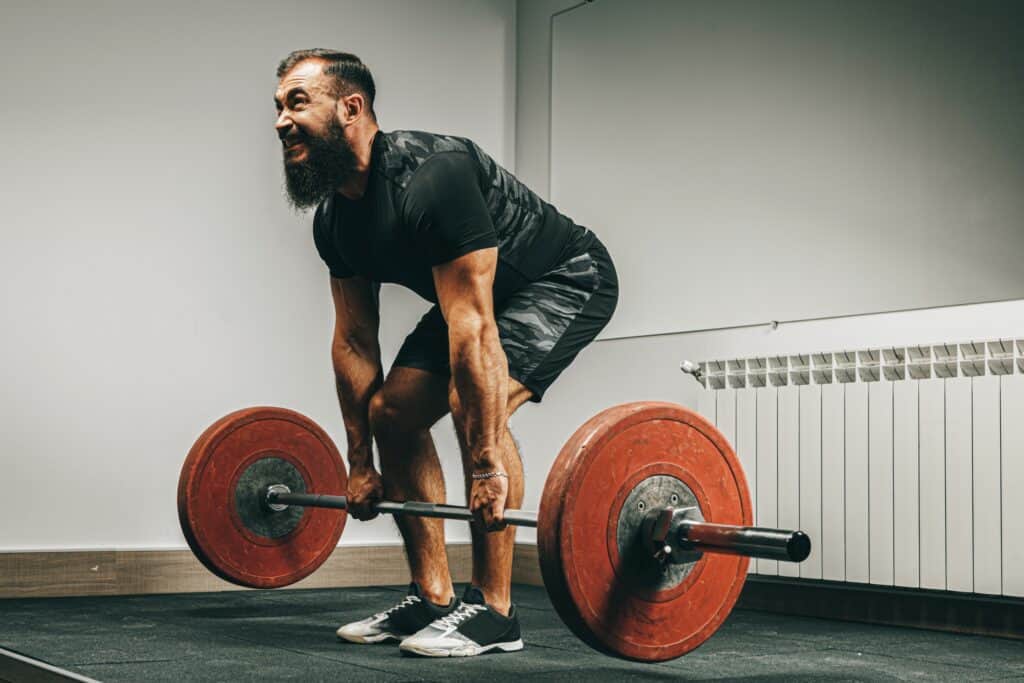
Recognised as one of the foundational movements in strength training.
The beauty of deadlifts lies in their ability to replicate real-world lifting scenarios, thereby enhancing functional fitness.
Primarily, deadlifts work the posterior chain, a group of muscles running down the back of your body.
These include the erector spinae (the muscles on either side of your spine), glutes, and hamstrings.
In addition, secondary muscles such as the quadriceps, traps, lats, and forearm muscles are engaged, making it a full-body workout.
- Stand with your feet hip-width apart and the barbell over your midfoot.
- Bend at the hips and knees to reach down and grab the barbell with a grip just outside your knees.
- Keeping your back straight and core engaged, lift the bar by standing up straight.
- At the top, lock out your hips and knees.
- Reverse the movement to return the bar to the ground, maintaining a straight back.
Note: If you are looking to work the hamstring more, keep the legs straighter (just a slight bend) on the way down and hold the bar just off the floor.
Squats
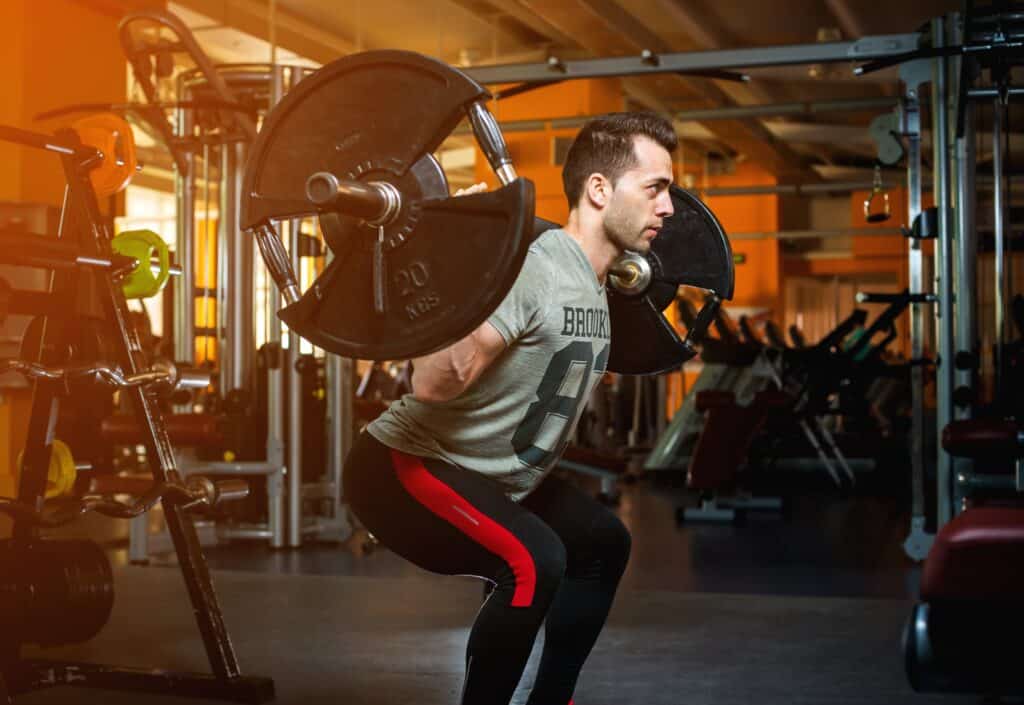
Squats are a quintessential compound exercise offering numerous benefits. Performing squats can improve your overall strength and flexibility, boost your calorie burn, and strengthen your lower body and core.
Furthermore, squats enhance your balance and mobility, making daily activities easier and improving your athletic performance.
The quadriceps, hamstrings, and glutes are the primary muscles targeted during squats. Squats also engage your lower back, hips, and calves, making it a comprehensive lower-body workout.
The Barbell Back Squat is a popular variation of the squat exercise. Below are the steps to performing a Barbell Back Squat correctly:
- Stand with your feet slightly wider than hip-width apart and toes slightly turned out. The barbell should be resting on your upper traps.
- Keeping your chest up and core braced, bend your knees and hips to lower your body as far as you can without compromising your posture.
- Push your heels into the ground to stand up and back to the starting position.
- Ensure the barbell is balanced and your body is in control throughout the movement.
Remember always to prioritise form over the amount of weight, especially if you’re a beginner.
Lunges
Primarily, lunges target the quadriceps at the front of your leg. However, they also work your glutes, hamstrings, and calves.
There are various types of lunges, such as the Forward Lunge, Reverse Lunge, Walking Lunge, Lateral Lunge, and Dumbbell Drop Lunge. These variations offer slightly different benefits and muscle engagement, allowing you to add variety to your workouts.
The Dumbbell Drop Lunge is an excellent compound exercise that adds an extra challenge. Here are the steps to perform a Dumbbell Drop Lunge:
- Stand upright with a dumbbell in each hand, arms fully extended, and palms facing your torso.
- Take a step forward with your right foot and lower your body, dropping into a lunge position. Your right knee should be at a 90-degree angle, and your back knee should hover just off the floor.
- As you lunge, lower the weights on either side of your front foot, keeping your arms straight.
- Push through your right heel to stand back up, lifting the weights to your sides.
- Repeat the movements on the other side.
Step-Ups
Stand in front of a bench or step. Place one foot on the step, push off that foot, and step up onto the step. Lower yourself back to the starting position and repeat with the other foot.
Bonus exercise
Clean and Press
Start with a barbell on the ground. Lift it to your chest quickly, then push it overhead. Lower the bar back down to your chest, then to the ground.
Remember, when performing these exercises, maintaining the correct form and technique is crucial to prevent injury and reap maximum benefits. Start with light weights, and gradually increase as your strength improves.
Notes for what beginners should be mindful of when performing compound exercises
As a beginner embarking on your journey with compound exercises, it’s crucial to approach this training style mindfully to ensure safety and effectiveness. Here are a few critical points to bear in mind:
Understand the movement
Before you perform any compound exercise, take the time to understand the movement and mechanics involved. You should always know what muscle(s) an exercise targets so that you can plan your training programme effectively.
This may involve researching or seeking guidance from a fitness professional.
Focus on form – The correct form is more important than lifting heavy weights. Incorrect form could lead to injury and reduce the effectiveness of the workout.
Start with lighter weights
Don’t rush into lifting heavy weights. Start with lighter weights and gradually increase them as you build strength and confidence.
Warm up and cool down
Always start your workout session with a warm-up routine to prepare your body for the intense activity. Similarly, cool down after workouts to help your body recover and prevent muscle soreness.
Rest and recover
Rest days are as important as workout days. They give your body time to repair and strengthen itself between workouts so that you are ready for your next training session.
Remember, the fitness journey is a marathon, not a sprint. So, take your time, listen to your body, and enjoy the process.
Hierarchy of compound exercises in a workout
For beginners, compound exercises should ideally be performed at the beginning of your workout. Since these exercises involve multiple muscle groups and require more energy, it’s beneficial to tackle them first when your energy levels are at their peak.
By starting with compound movements, you can ensure that you can give these multifaceted exercises your full strength and focus.
Once you’ve completed your compound exercises, you can move on to isolation exercises.
This approach will allow you to exhaust each muscle group and maximise your workout effectiveness fully. Keep in mind that everybody is different, and what works best for you might vary.
However, there are times when you may want to use a compound exercise later on in a training session after an isolation exercise. This is usually best for more advanced trainers and is used for a specific reason.
Advanced trainers may occasionally opt to perform isolation exercises before compound movements, a strategy known as “pre-exhaustion.”
This technique intentionally tires out a specific muscle group through an isolation exercise before moving on to a compound exercise. The idea behind pre-exhaustion is to push the targeted muscles to their limits, challenging growth and strength.
The approach can help overcome plateaus and stimulate further muscle development, especially when you get to a point where your grip strength fails you when performing the compound exercise before the specific muscle fatigues.
However, it’s crucial to note that pre-exhaustion techniques should be employed judiciously. They are typically not recommended for beginners due to the increased risk of injury when fatigue sets in.
How to continue progressing with compound exercises
Progressing with compound exercises doesn’t necessarily mean lifting heavier weights. It’s about exploring different dimensions of fitness, such as endurance, strength, and flexibility.
Here are some strategies that can help you on this journey:
- Engage in progressive overload
- Improving Your Form
- Varying Your Routine
- Periodisation
Remember, it’s essential to listen to your body and give it the necessary rest to repair and strengthen.
Progress is a slow, constant process, and consistency is key!
If you’re interested in more articles like this, check out the blog posts below or visit the page.
